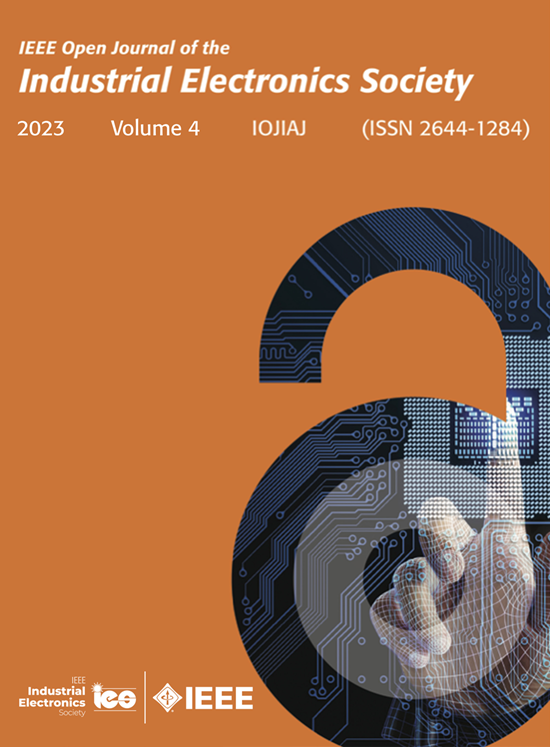基于竞争卷积核的交流网络串联电弧故障实时检测与设备分类
IF 4.3
Q1 ENGINEERING, ELECTRICAL & ELECTRONIC
IEEE Open Journal of the Industrial Electronics Society
Pub Date : 2025-06-23
DOI:10.1109/OJIES.2025.3582482
引用次数: 0
摘要
本文提出了一种基于HYDRA (HYbrid dictionary - rocket Architecture)算法的基于竞争卷积核的时间序列快速字典分类方法,通过对电流时间序列数据的分析,对影响国内交流电路的串联电弧故障进行检测和分类的方法。关键的新贡献有两个:竞争卷积核适合于有效地提取代表一组有效电弧故障检测指标的特征,并且以这种方式执行的分类是可行的,可以实时执行。使用公共数据库验证了所提出的方法,该数据库根据IEC 62606标准收集了来自13种不同类型负载的数据。为了减少嵌入式控制单元的推理时间并优化算法,采用了特征约简策略。通过在电弧和非电弧条件下以及在不同载荷类型下进行的实验测试,证明了所提出方法的有效性。此外,在普通电器操作变化引起的瞬变情况下,也测试了其准确性。实现的结果表明,在基于ARM cortex的电路板上执行该算法时,检测精度约为99%,设备分类性能约为98%,推理时间范围为2.8至172.0 ms。本文章由计算机程序翻译,如有差异,请以英文原文为准。
Real-Time Series Arc Fault Detection and Appliances Classification in AC Networks Based on Competing Convolutional Kernels
This article presents a method to detect and classify series arc faults affecting domestic AC electrical circuits by the analysis of electric current time series data, based on the HYDRA (HYbrid Dictionary-Rocket Architecture) algorithm, a fast dictionary method for time series classification employing competing convolutional kernels. The key novel contributions are twofold: Competing convolutional kernels are suitable to effectively extract features representing an effective set of arc fault detection indicators, and the classification performed in this way is feasible to be executed in real time. The proposed method is validated using a public database, where data from 13 different types of loads is collected according to the IEC 62606 standard. To reduce inference time and optimize the algorithm for embedded control units, a feature reduction strategy is employed. The effectiveness of the proposed method is demonstrated through experimental tests conducted under both arcing and non-arcing conditions and across different load types. Moreover, its accuracy is also tested in case of transients caused by operational changes in common electrical appliances. Achieved results show a detection accuracy of approximately 99%, with appliance classification performance around 98%, with inference times ranging from 2.8 to 172.0 ms while executing the algorithm on an ARM Cortex-based board.
求助全文
通过发布文献求助,成功后即可免费获取论文全文。
去求助
来源期刊

IEEE Open Journal of the Industrial Electronics Society
ENGINEERING, ELECTRICAL & ELECTRONIC-
CiteScore
10.80
自引率
2.40%
发文量
33
审稿时长
12 weeks
期刊介绍:
The IEEE Open Journal of the Industrial Electronics Society is dedicated to advancing information-intensive, knowledge-based automation, and digitalization, aiming to enhance various industrial and infrastructural ecosystems including energy, mobility, health, and home/building infrastructure. Encompassing a range of techniques leveraging data and information acquisition, analysis, manipulation, and distribution, the journal strives to achieve greater flexibility, efficiency, effectiveness, reliability, and security within digitalized and networked environments.
Our scope provides a platform for discourse and dissemination of the latest developments in numerous research and innovation areas. These include electrical components and systems, smart grids, industrial cyber-physical systems, motion control, robotics and mechatronics, sensors and actuators, factory and building communication and automation, industrial digitalization, flexible and reconfigurable manufacturing, assistant systems, industrial applications of artificial intelligence and data science, as well as the implementation of machine learning, artificial neural networks, and fuzzy logic. Additionally, we explore human factors in digitalized and networked ecosystems. Join us in exploring and shaping the future of industrial electronics and digitalization.
 求助内容:
求助内容: 应助结果提醒方式:
应助结果提醒方式:


